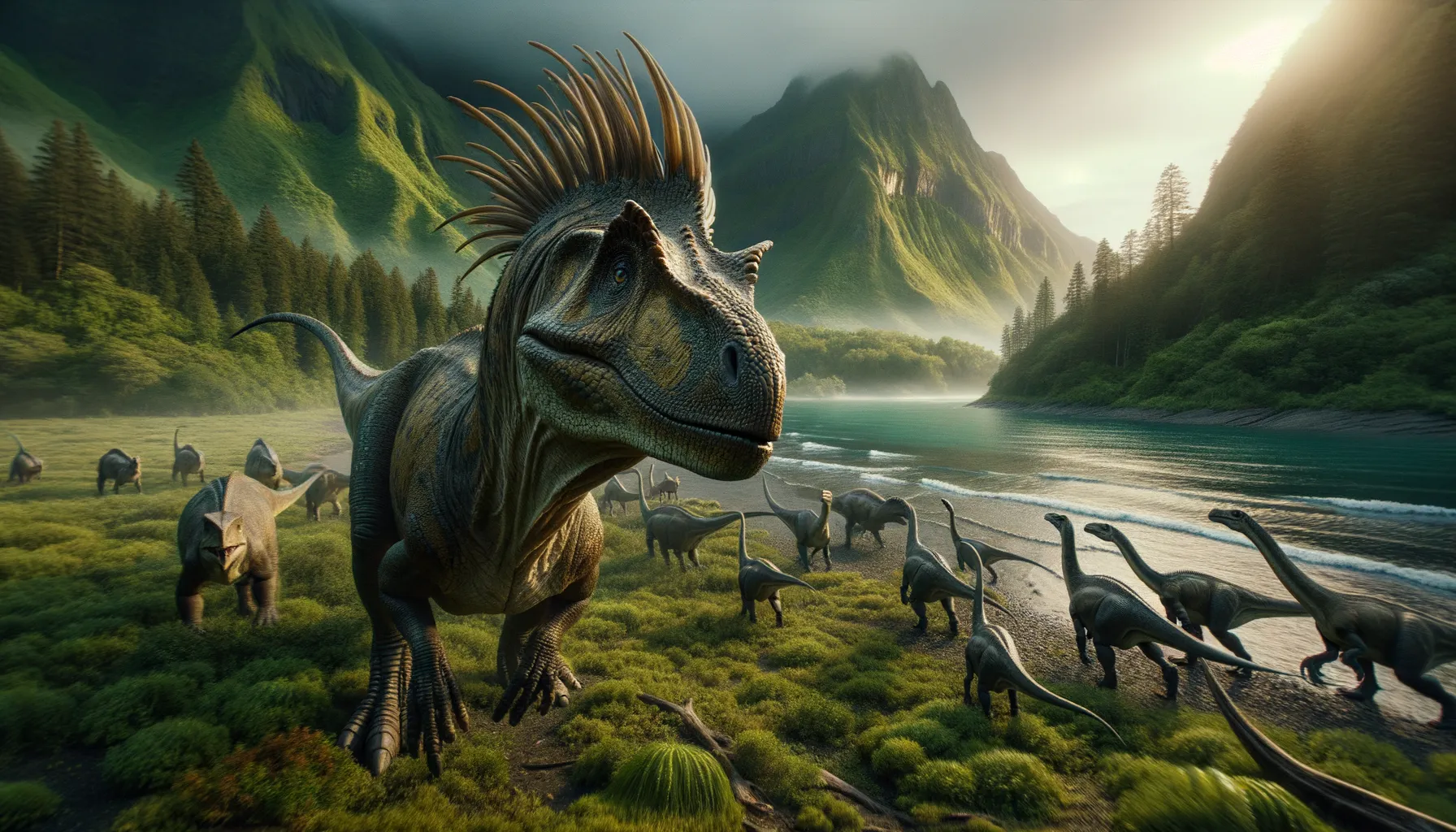
Corythosaurus
The crested communicator of ancient lands.
Period
Cretaceous
Length
Measured up to 30 feet long from head to tail.
Height
Stood about 8-10 feet tall at the hips.
Weight
It weighed around 3-4 tons.
Corythosaurus was a duck-billed dinosaur known for its distinctive helmet-like crest on its head, which likely served as a resonating chamber for communication. It roamed the Earth during the Late Cretaceous period, approximately 77 million years ago. This herbivorous dinosaur thrived in the lush, coastal plains, moving in herds for protection and social interaction. Its fossils have provided insight into dinosaur behavior, anatomy, and the ecosystems they inhabited.
Diet
Corythosaurus was a herbivore, primarily feeding on a variety of plants including conifers, ferns, and cycads. Its flat teeth were well-suited for grinding leaves and other plant materials.
Hunting
Being a herbivore, Corythosaurus did not engage in hunting behavior. Instead, it foraged for plants along riverbanks, using its keen sense of smell to locate food sources.
Environmental challenges
Corythosaurus faced challenges such as seasonal changes that impacted food availability. During dry seasons, it needed to migrate to areas with more abundant vegetation. Predation by large carnivores also posed a constant threat, requiring vigilance and social cooperation within herds for protection.
Speed
It was relatively slow, moving at about 10-15 mph.
Lifespan
An estimated 15-20 years in the wild.
First discovery
Discovered in 1912 by Barnum Brown in Canada.
Fun Facts
- Corythosaurus, meaning 'helmet lizard', is named for its distinctive, helmet-like crest on its head.
- This dinosaur lived during the Late Cretaceous period, roughly 77 to 75 million years ago.
- Corythosaurus was a herbivore, feasting primarily on plants like ferns and conifers.
- Its hollow crest may have been used for communication, possibly to make sounds or signals to others.
- Fossils of Corythosaurus have been found in North America, particularly in Alberta, Canada.
- Corythosaurus could walk on both two legs and four legs, depending on whether it was moving fast or slow.
- It likely lived in herds, providing protection and social interaction for these fascinating creatures.
Growth and Development
Corythosaurus likely hatched from eggs and experienced quick growth over several years to reach full size. Juveniles were smaller and had less developed crests, which matured as they aged. The development of the crest was an important aspect of its lifecycle, as it played a role in species identification and social interactions.
Habitat
Corythosaurus lived in coastal plain environments near rivers and lakes, where lush vegetation was abundant. This habitat provided ample food resources and water, key to its survival. These areas were dynamic, with changing water levels and seasonal shifts influencing the landscape.
Interaction with other species
As a herd animal, Corythosaurus interacted closely with members of its own species for protection and social behaviors. It coexisted with other herbivores and needed to compete with them for plant resources. It was also a target for large predatory dinosaurs, which necessitated constant alertness.
Natural lifespan
Corythosaurus had a natural lifespan of around 15 to 20 years.
Reproduction
Corythosaurus likely laid eggs in nests, possibly in communal nesting grounds. Parents might have guarded the eggs or young in some capacity to ensure higher survival rates. The development of young Corythosaurus was relatively fast, quickly reaching sizes that reduced their vulnerability.
Social behaviour
Corythosaurus was a social animal, moving in groups for protection and resource acquisition. Their crests may have facilitated communication between individuals, perhaps through vocalizations. Such social structures likely provided benefits such as increased vigilance and group defense against predators.
Fossil locations
Corythosaurus fossils have been predominantly found in North America, especially in the Dinosaur Park Formation in Alberta, Canada. These fossil sites have provided rich insights into the Cretaceous period ecosystems. Continued excavations in these areas help unravel more details of their lives and habitats.
